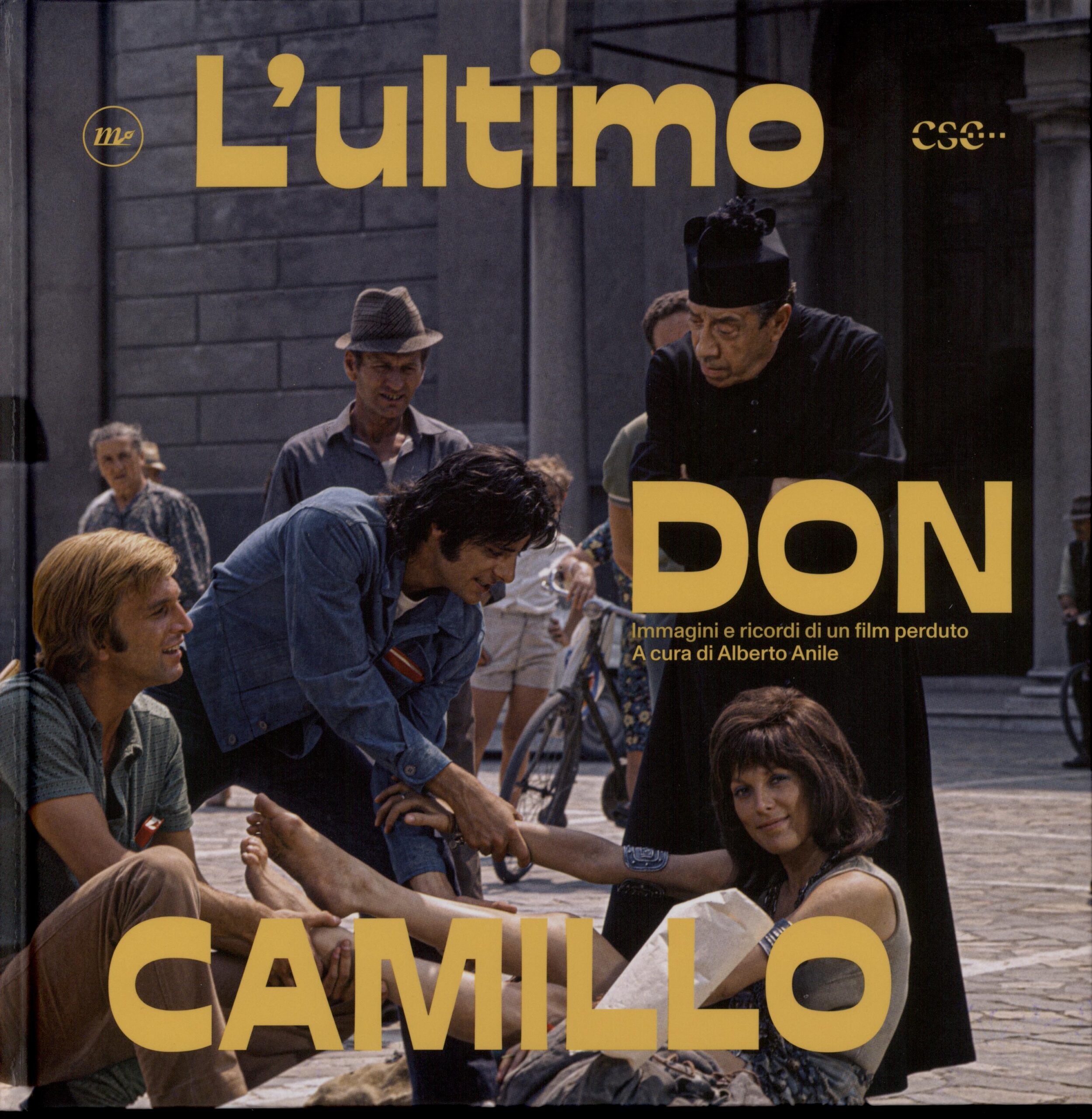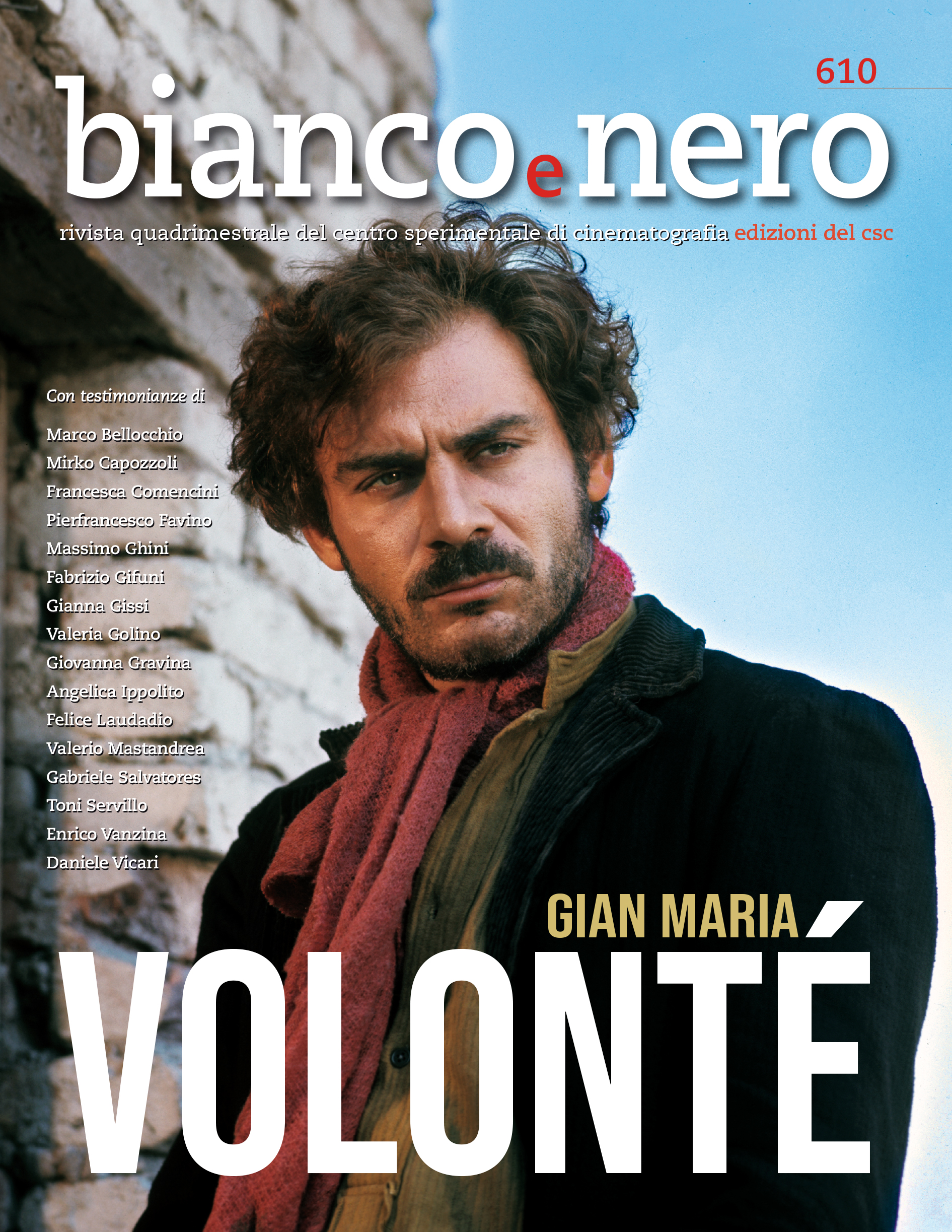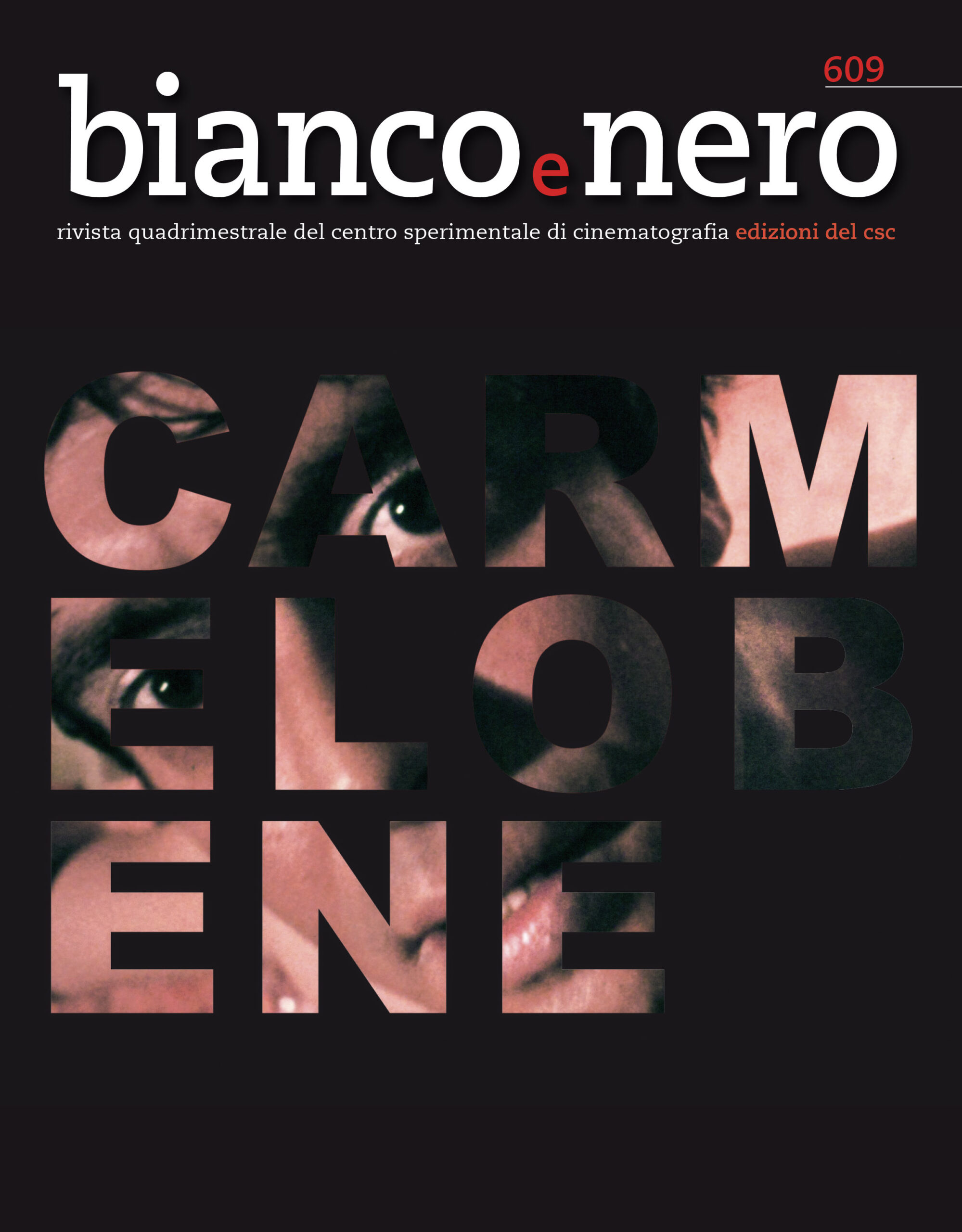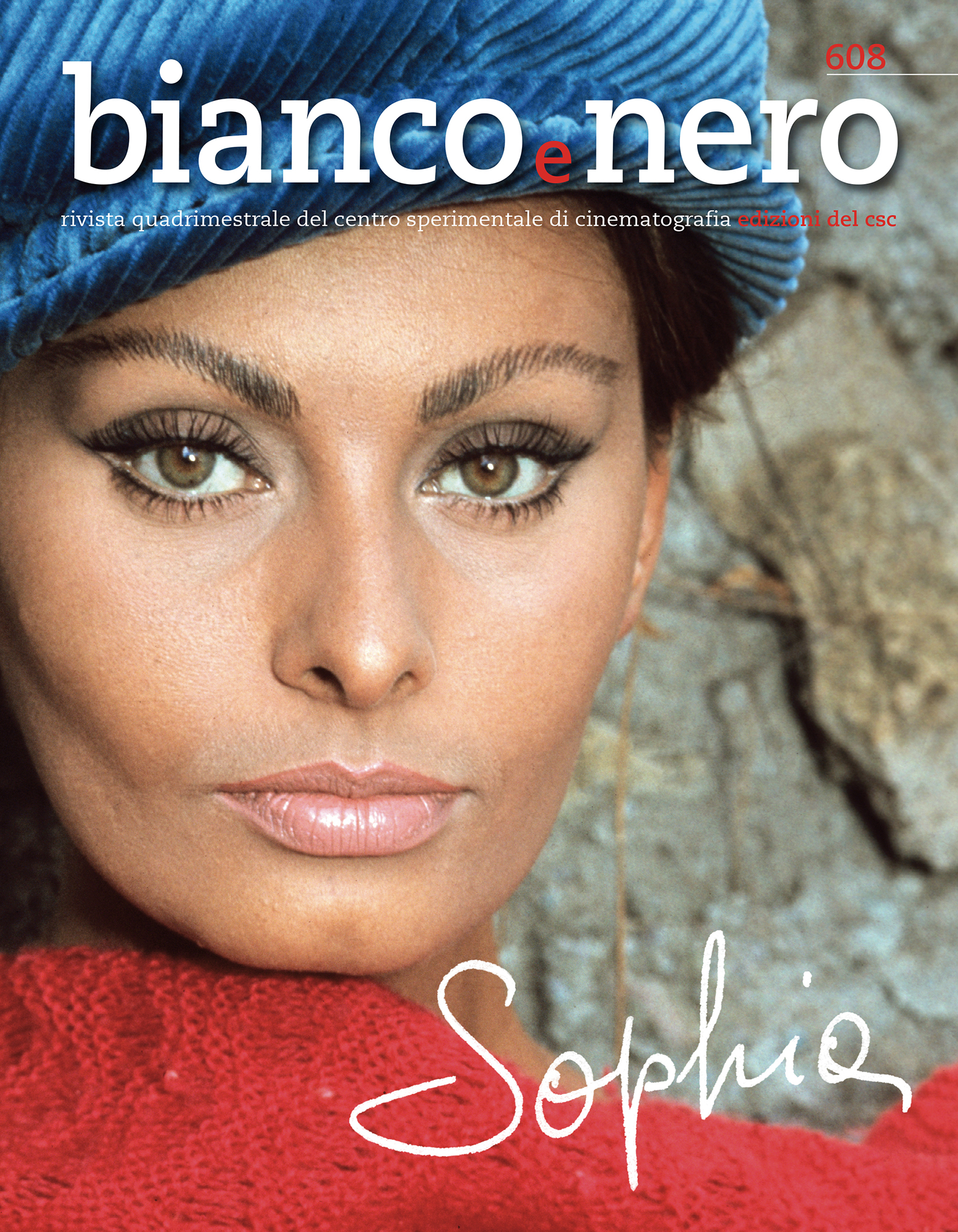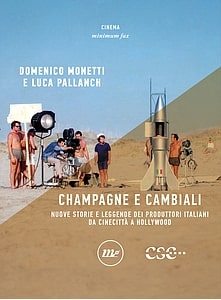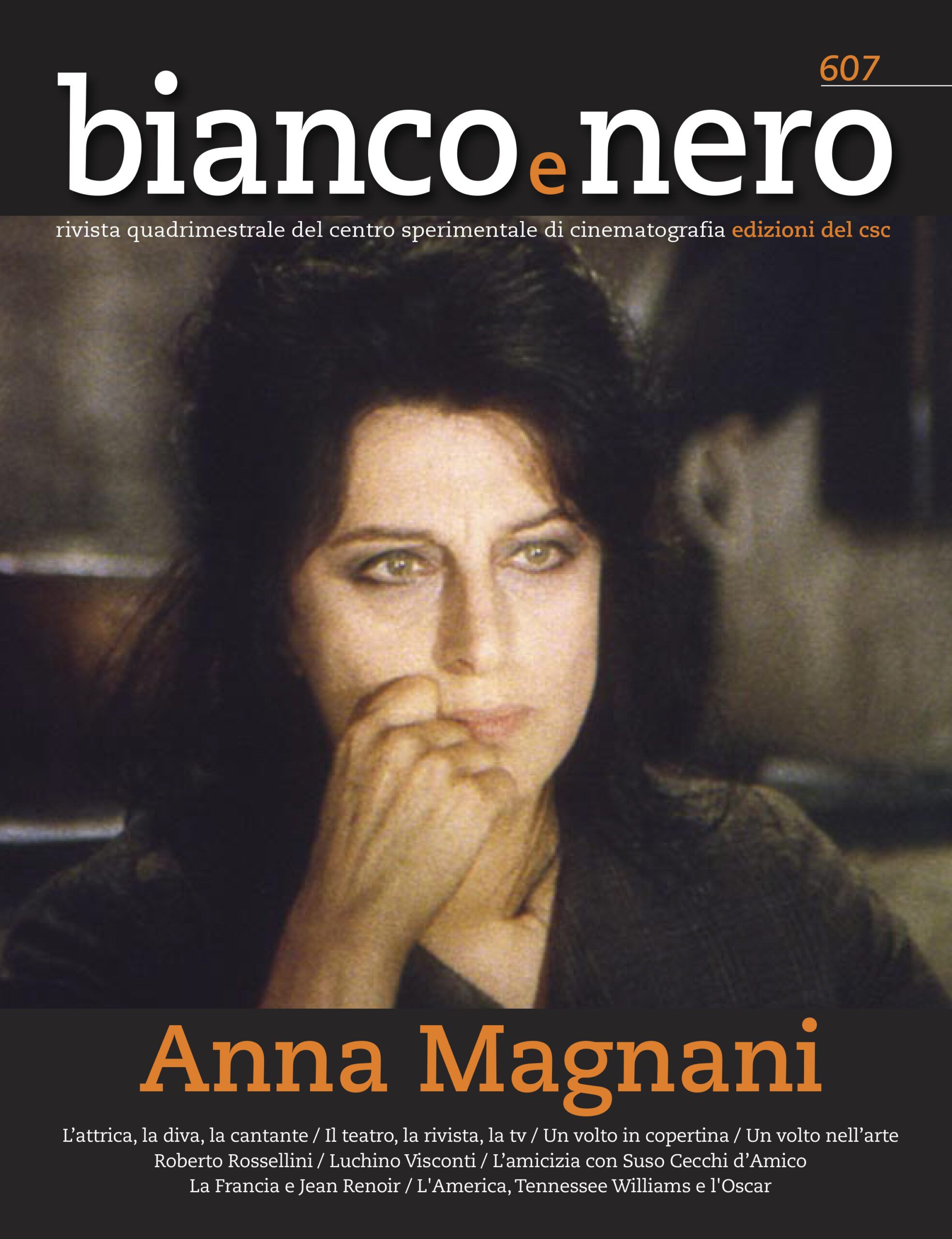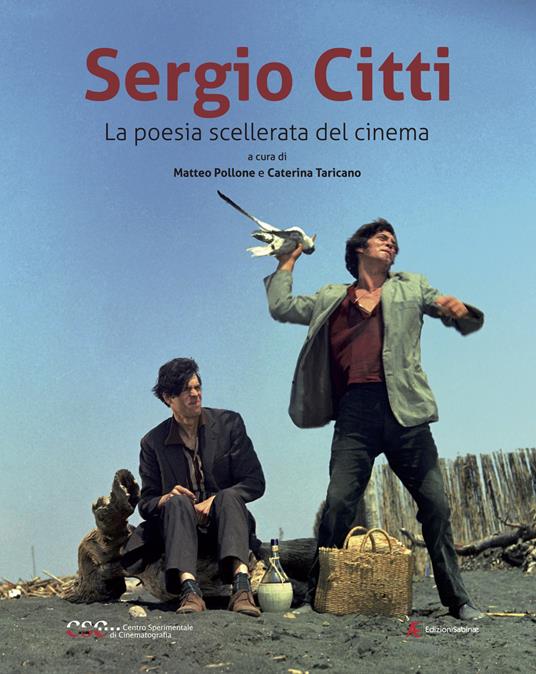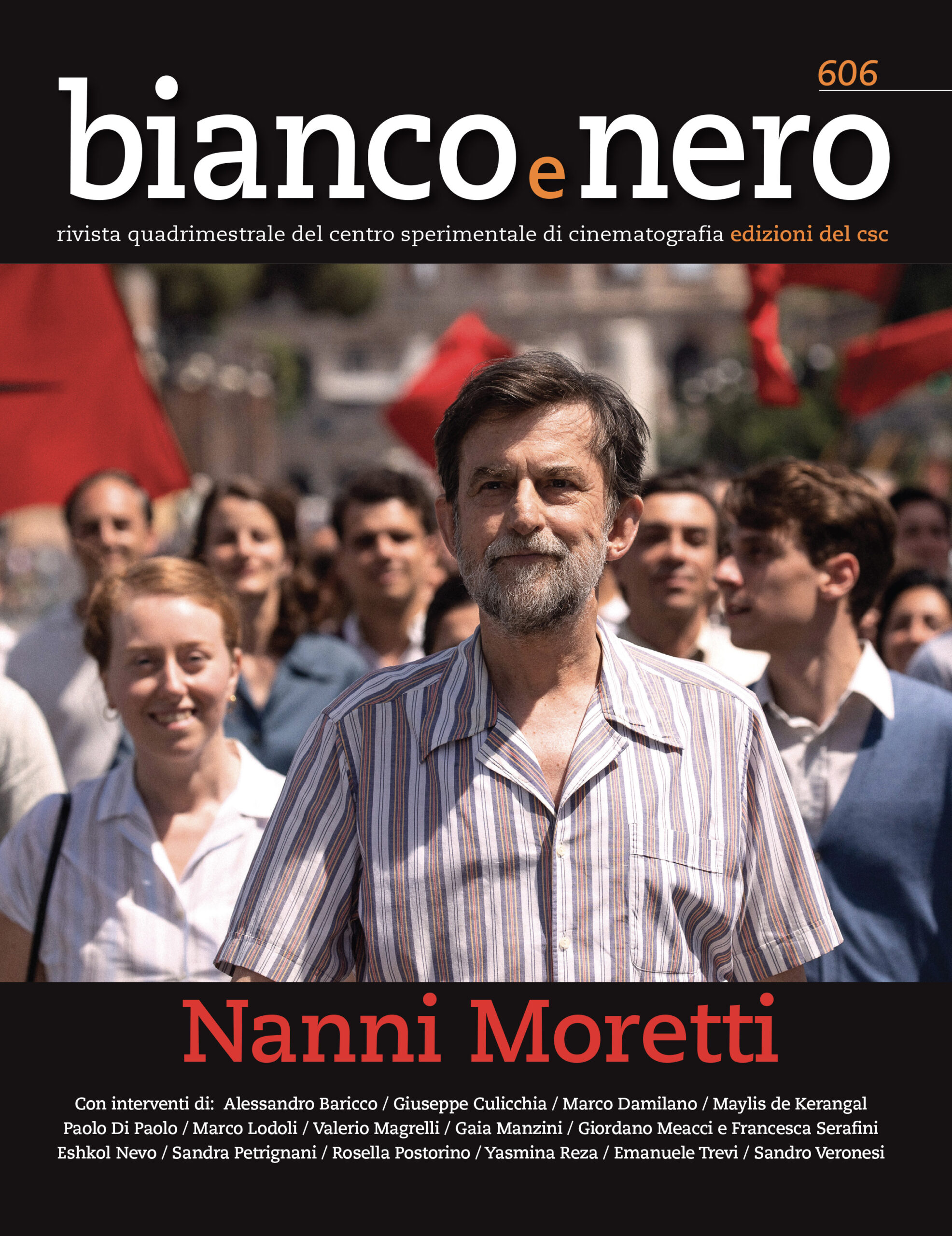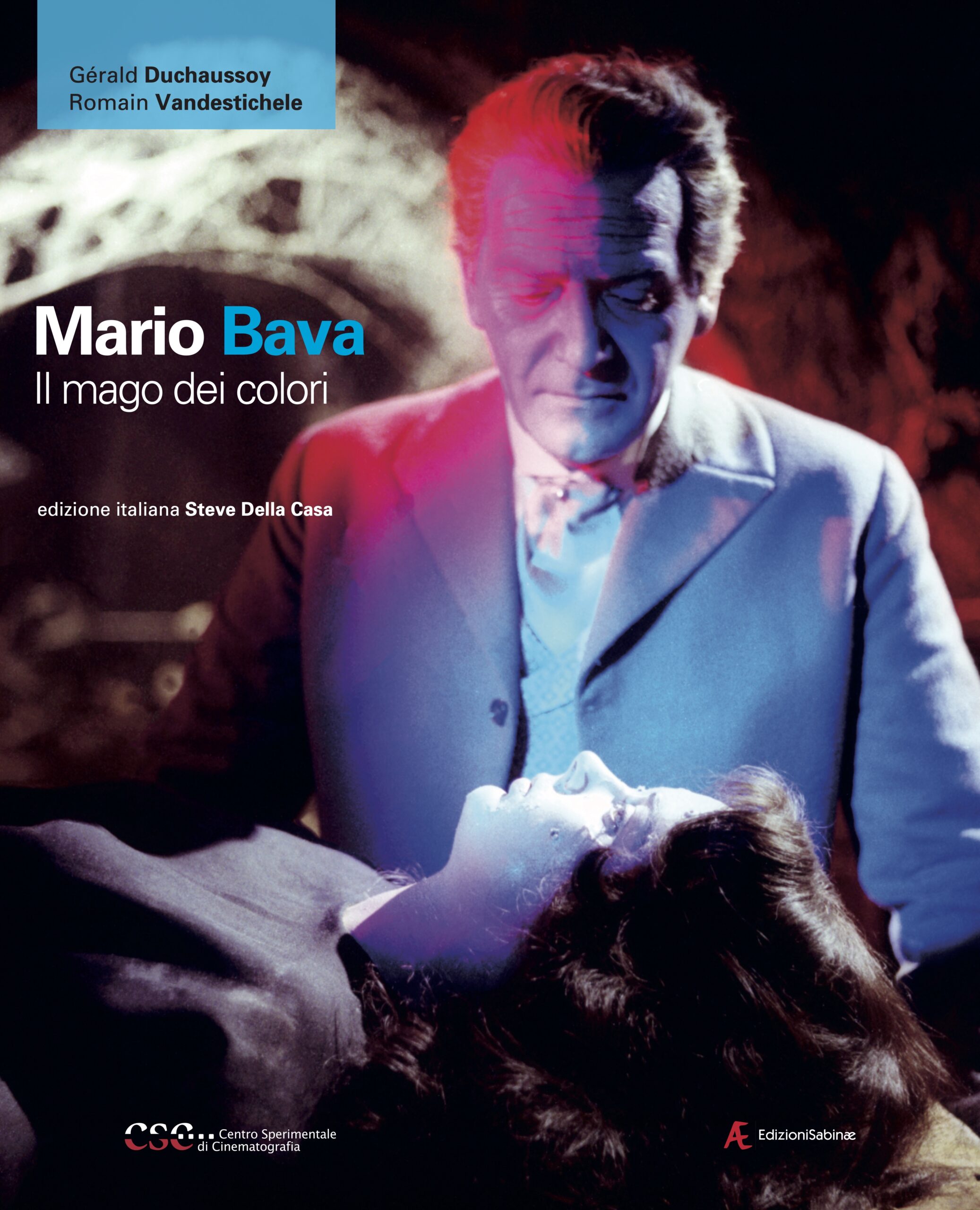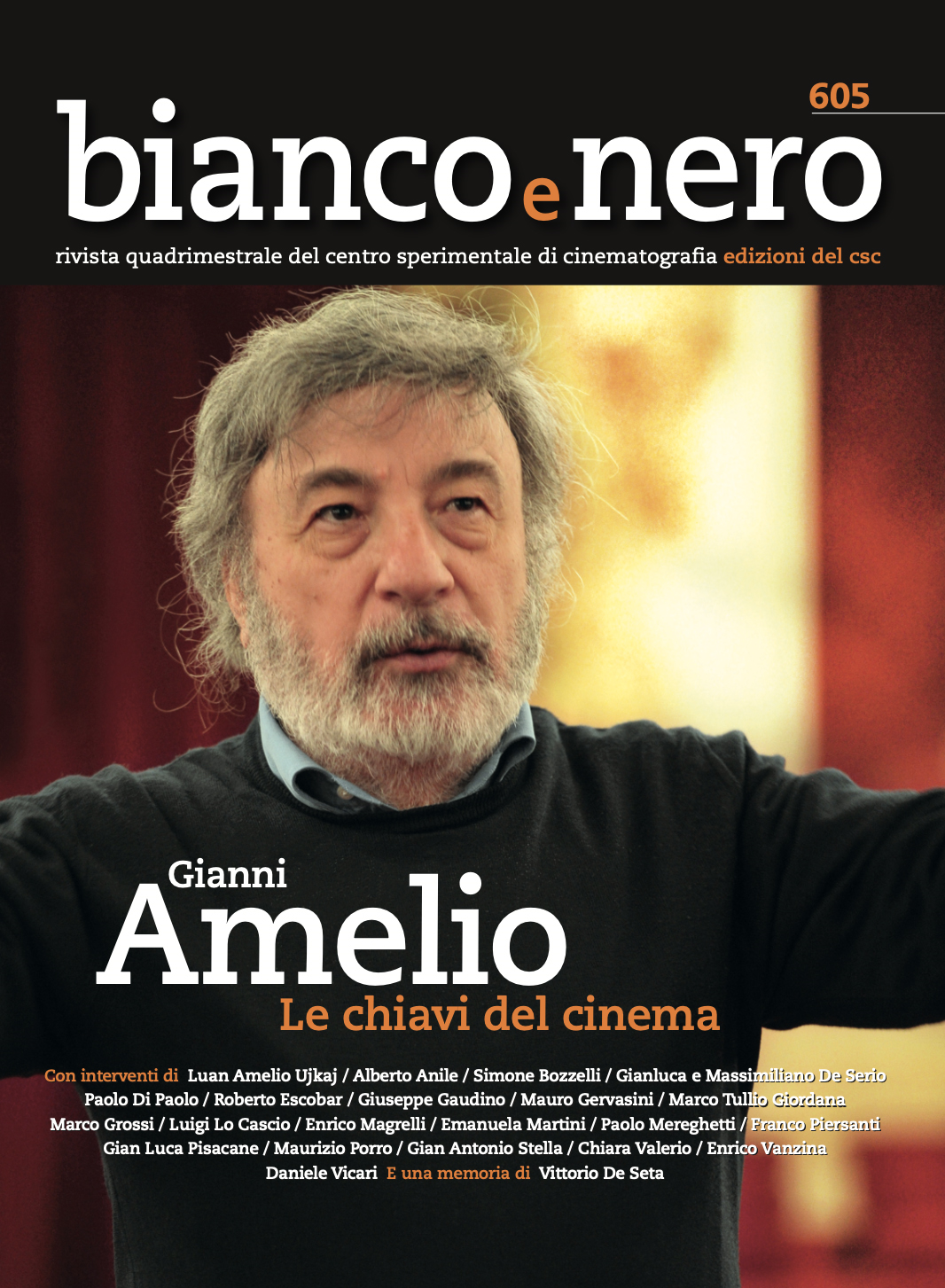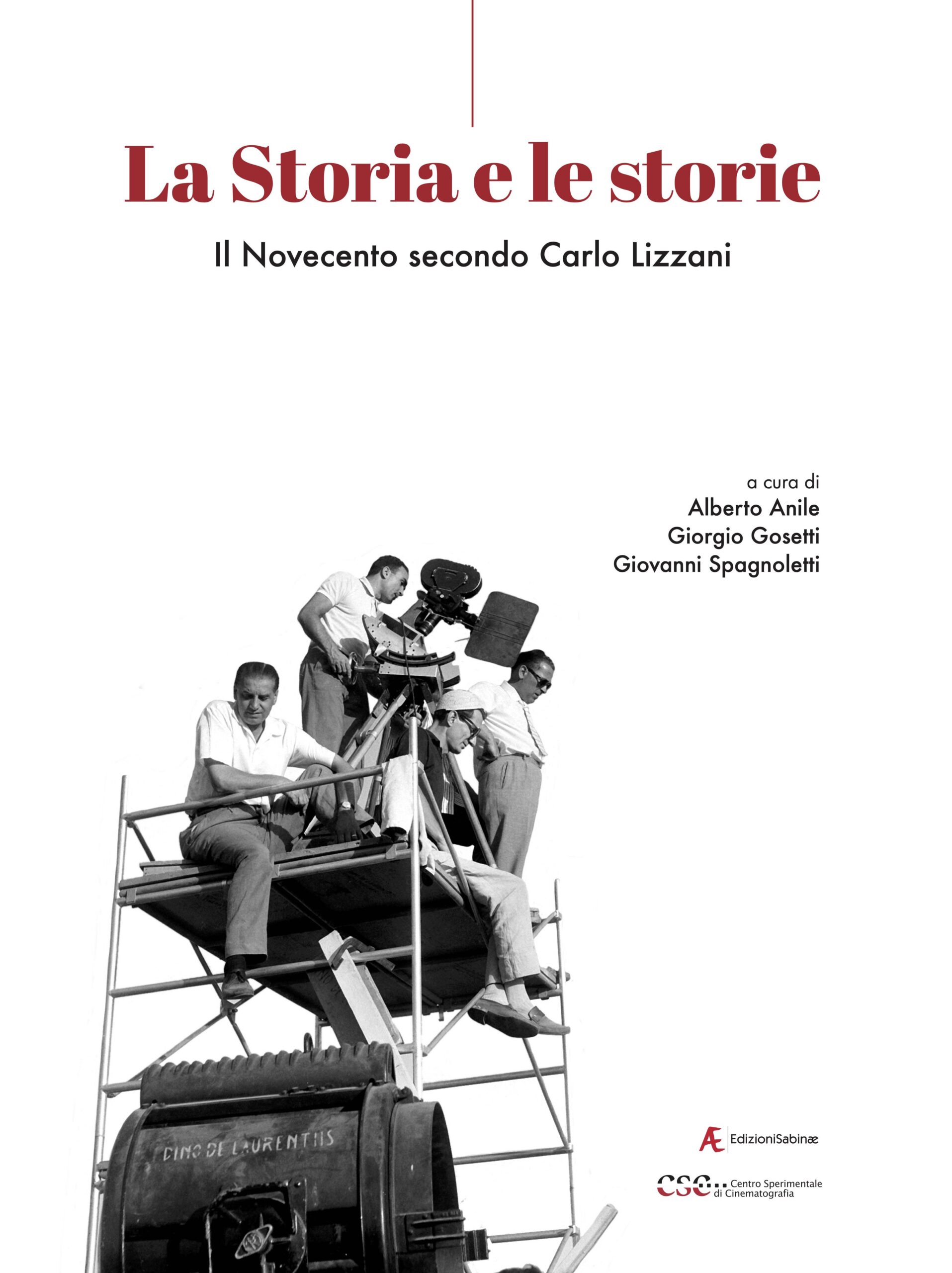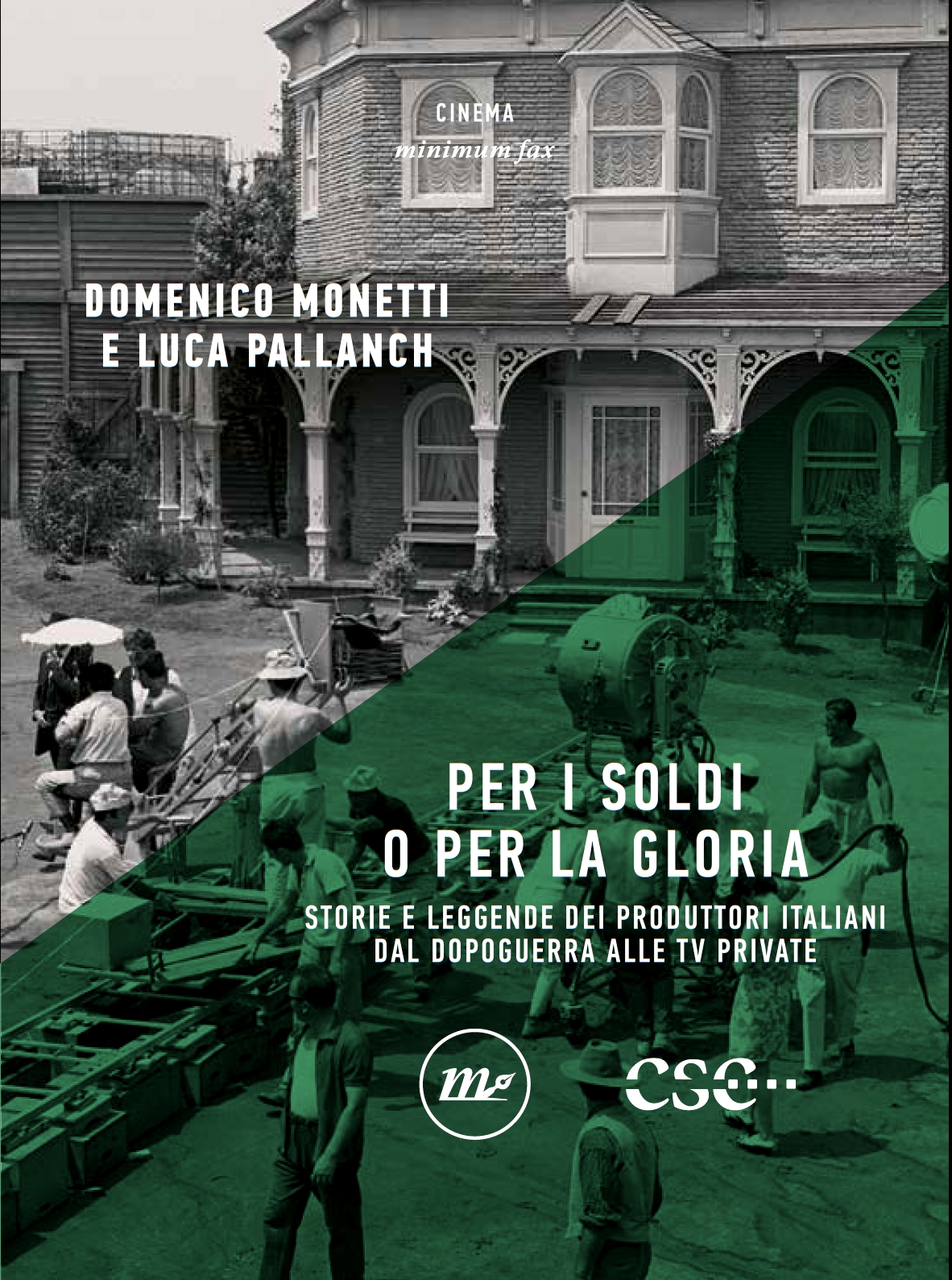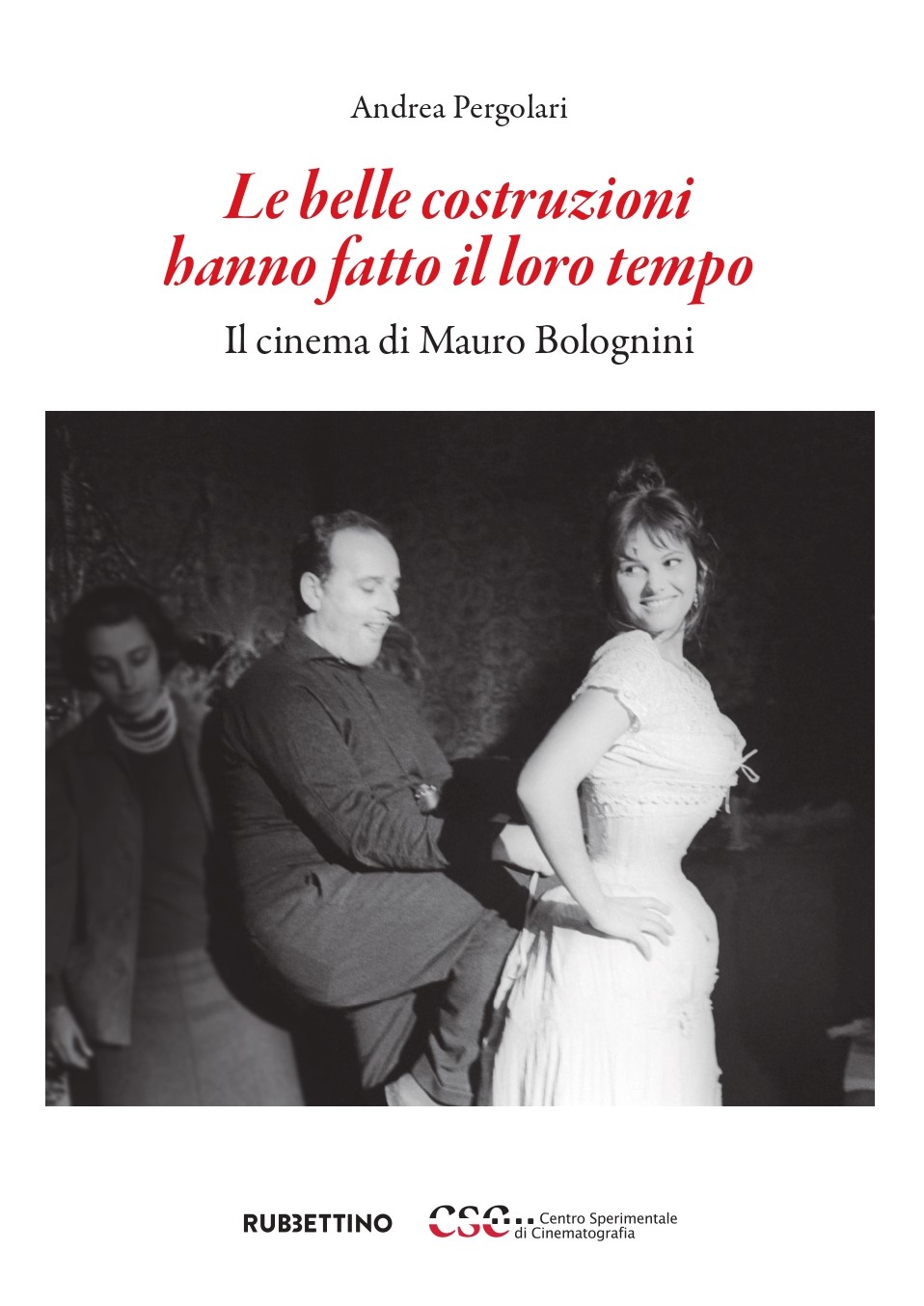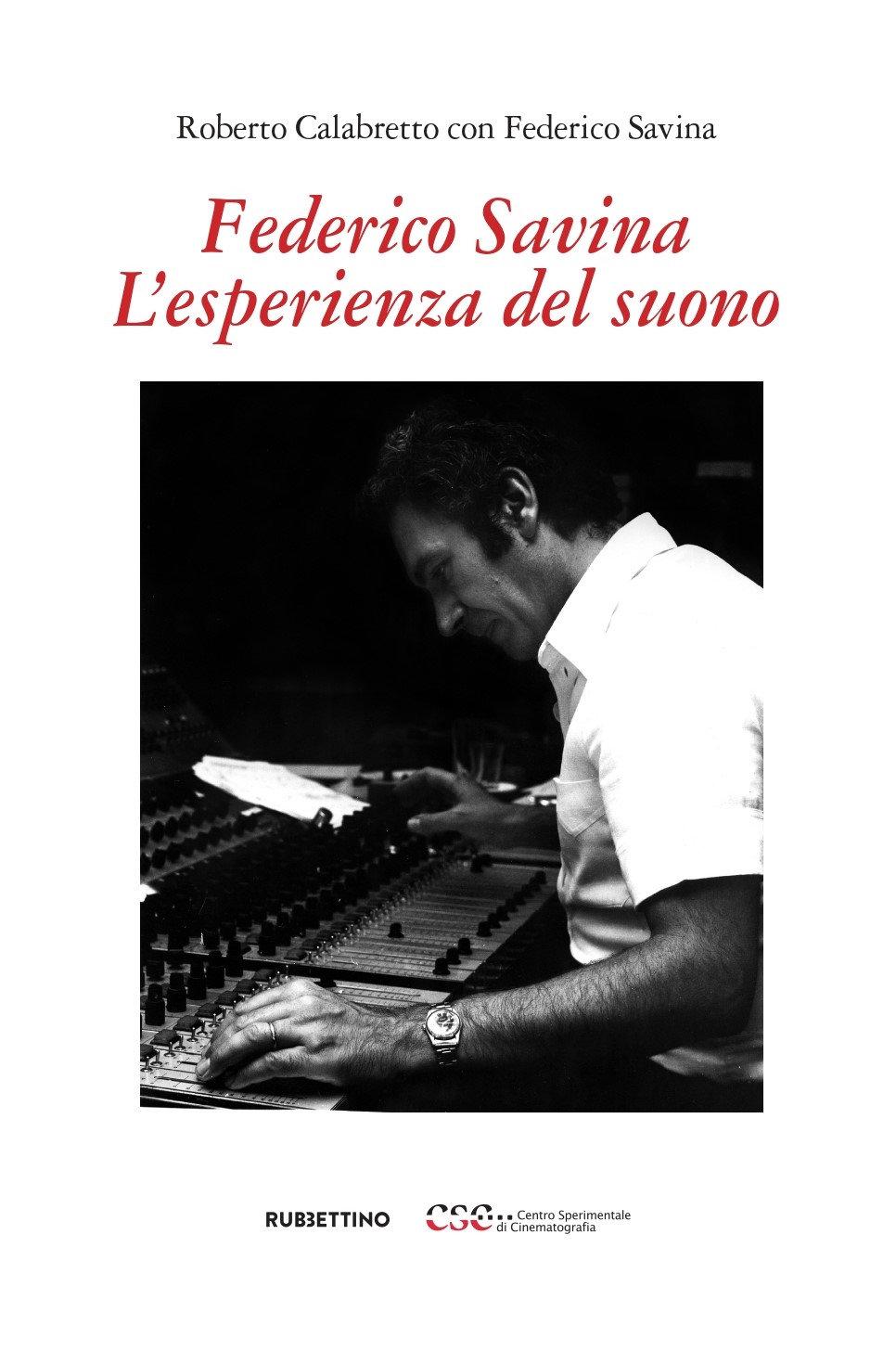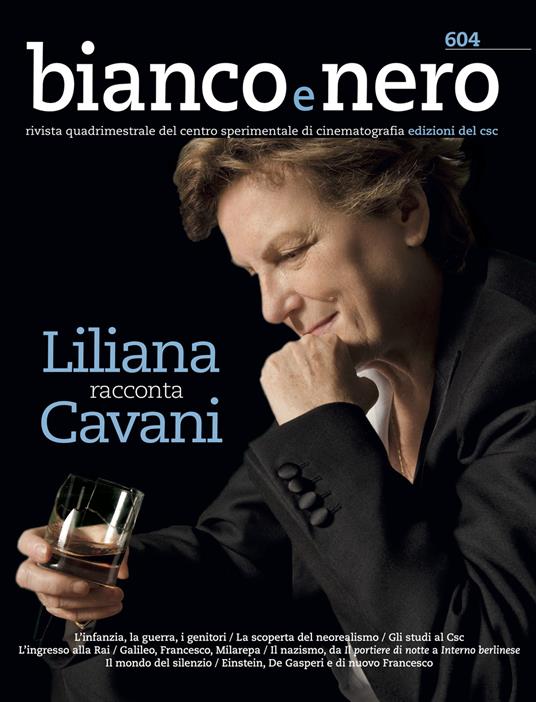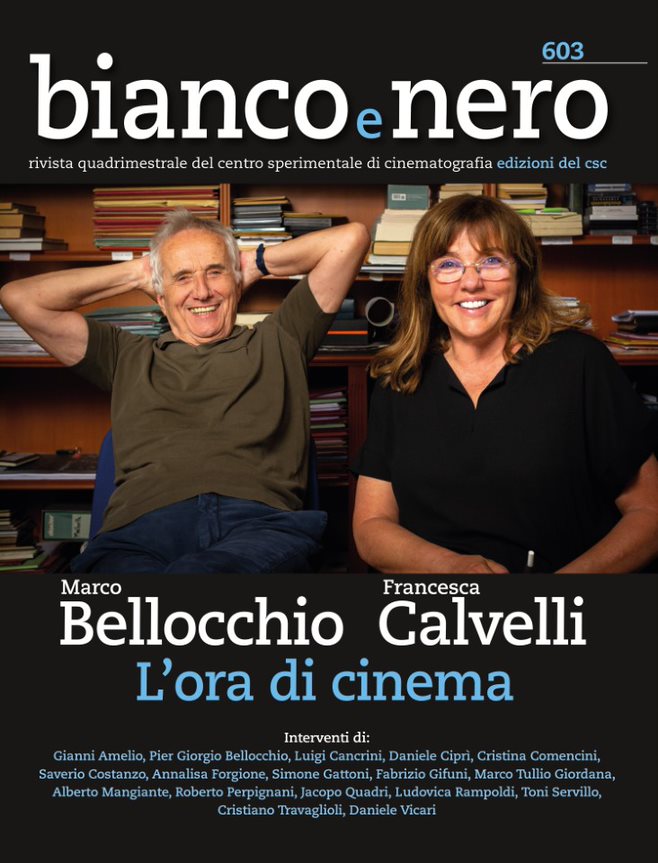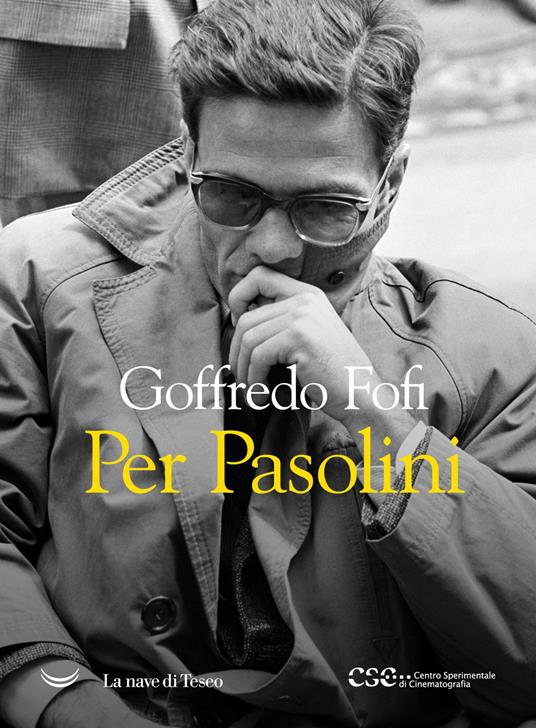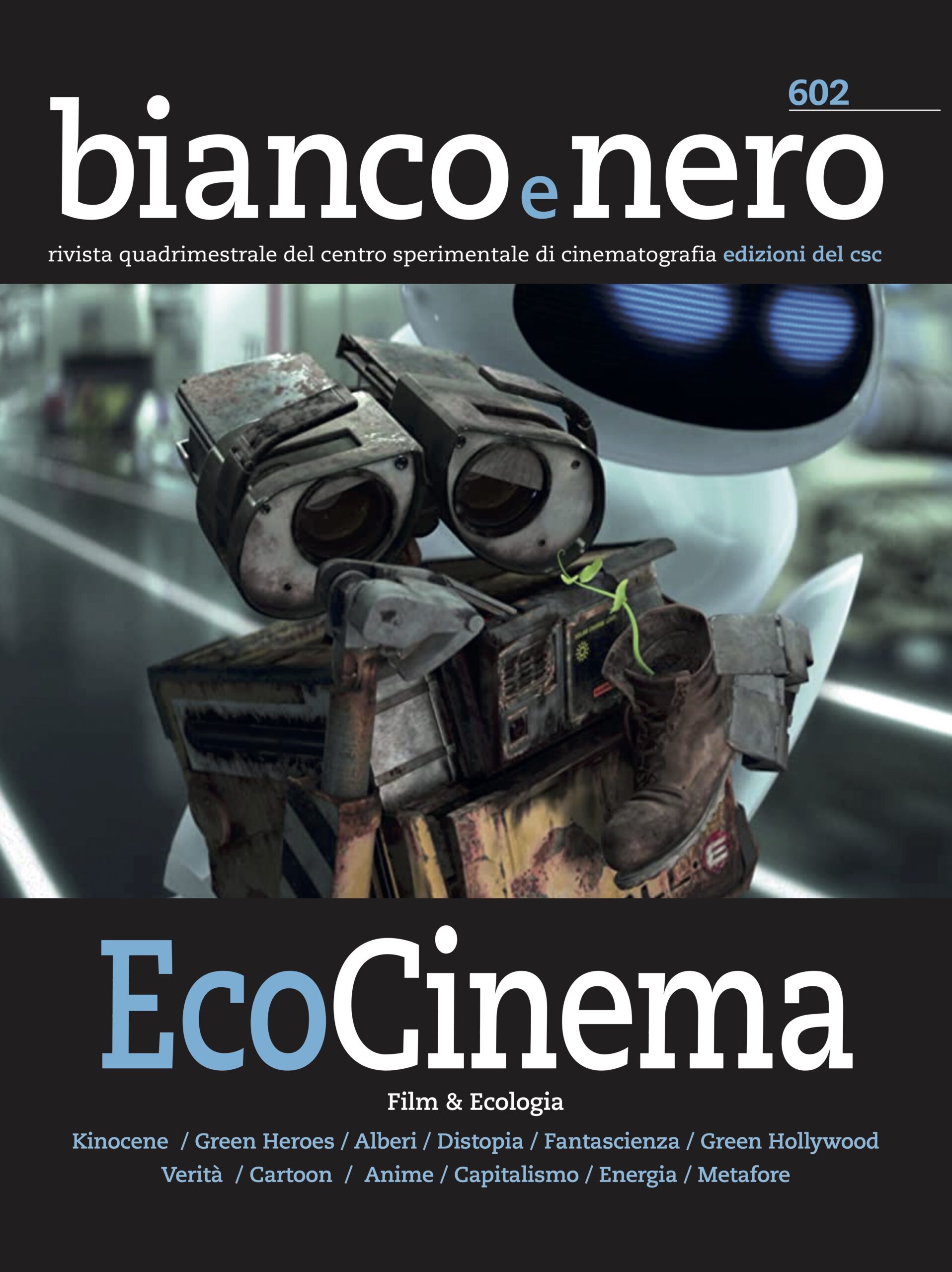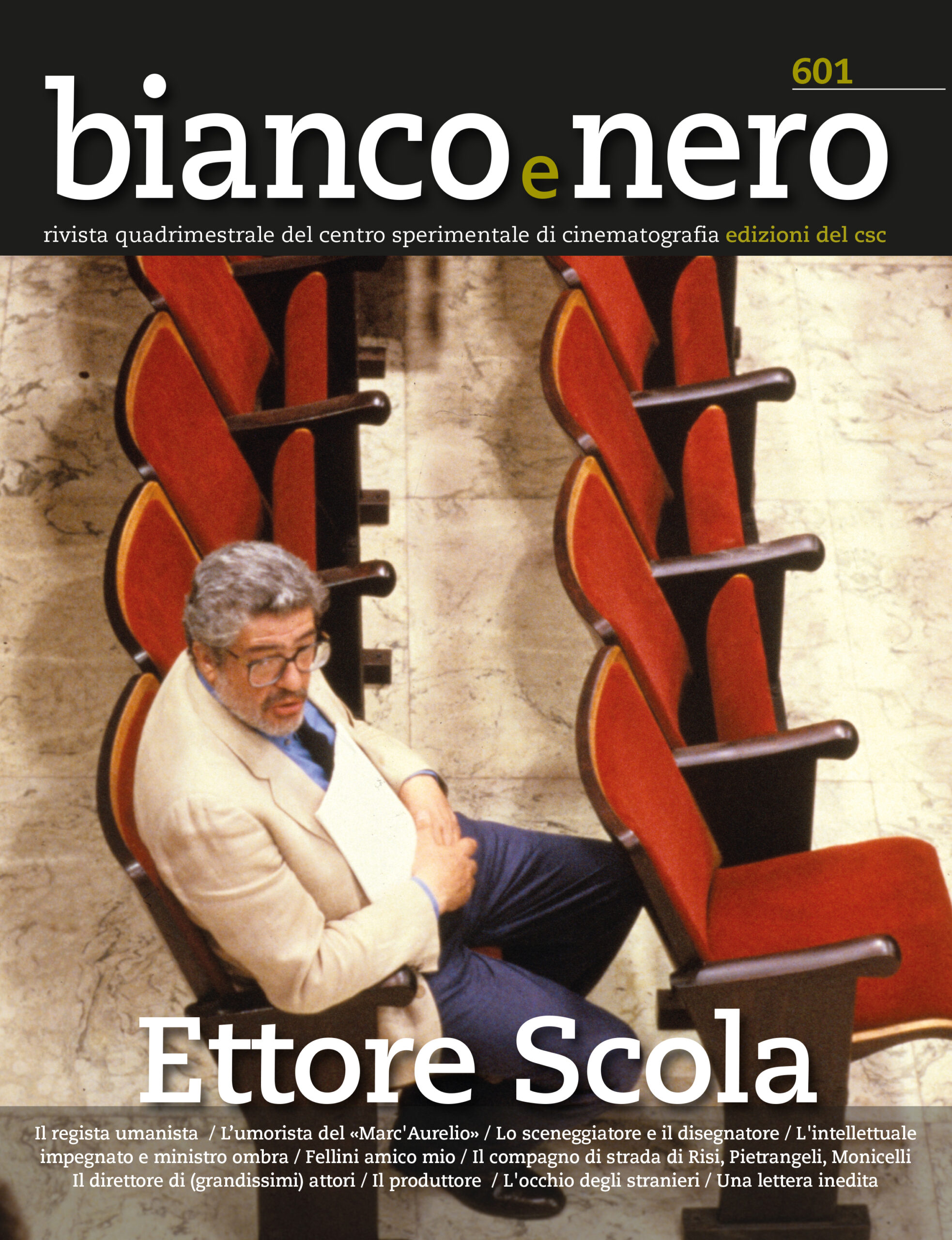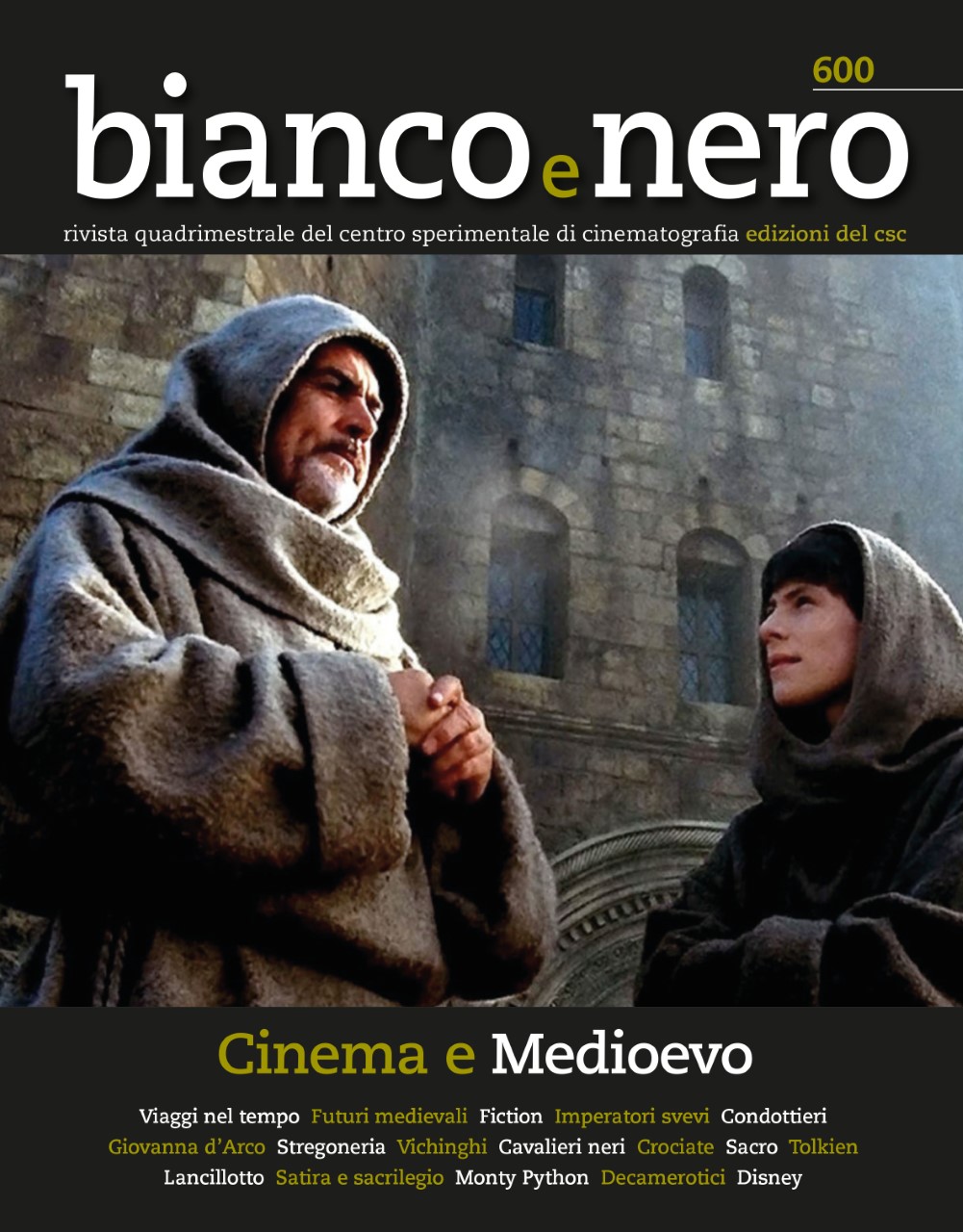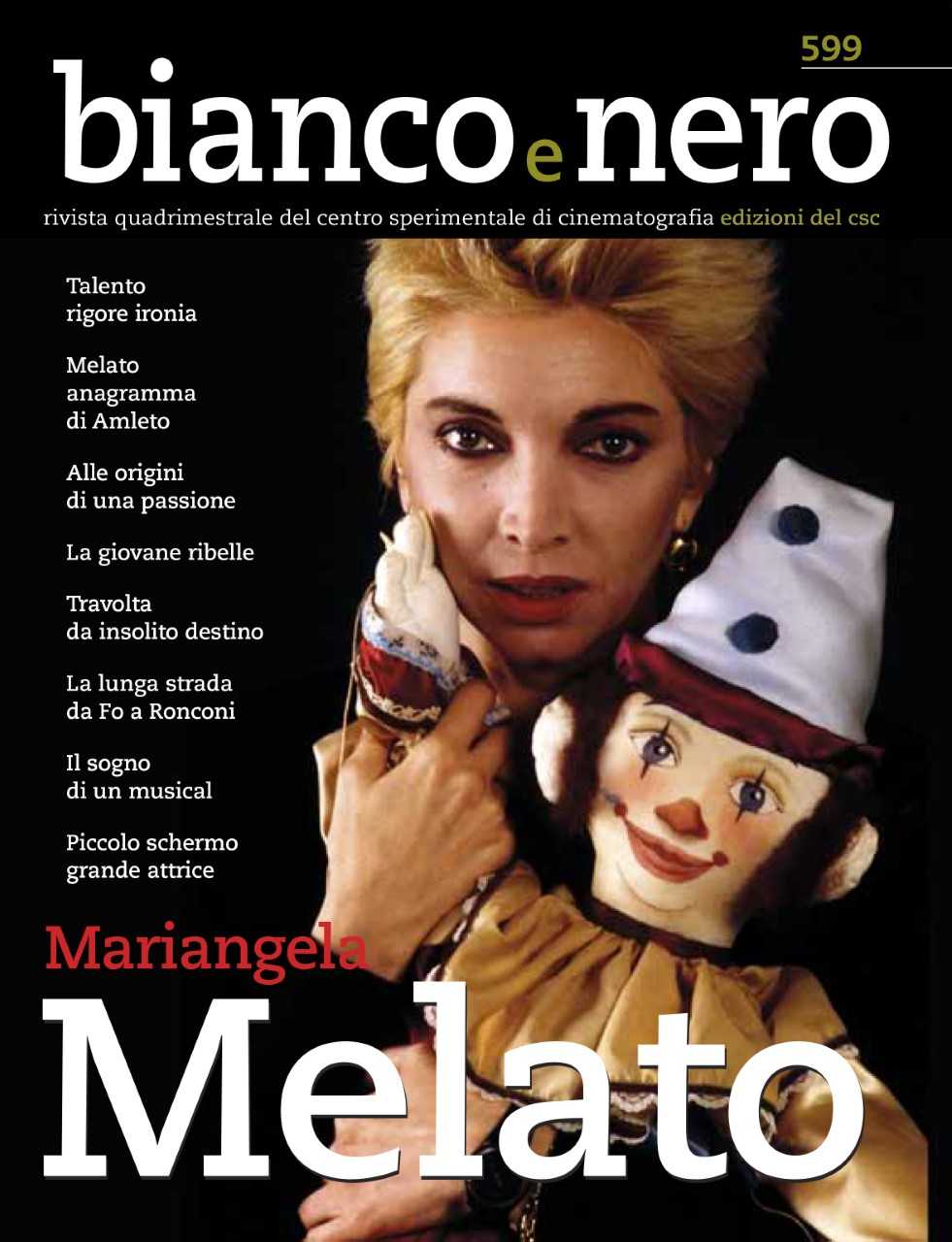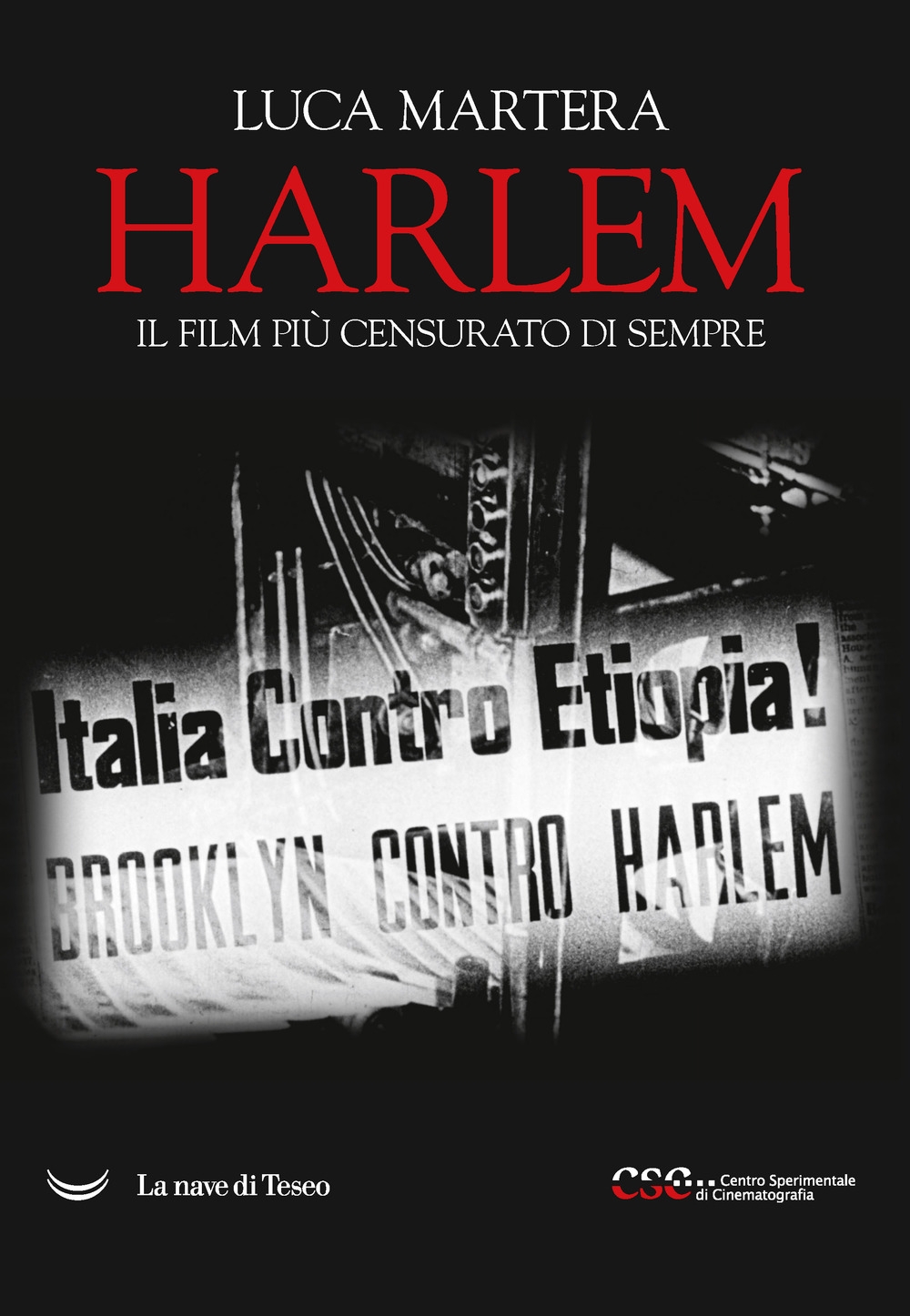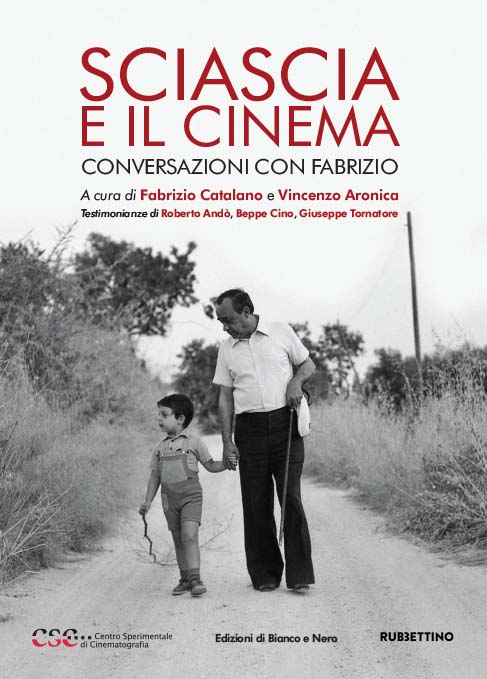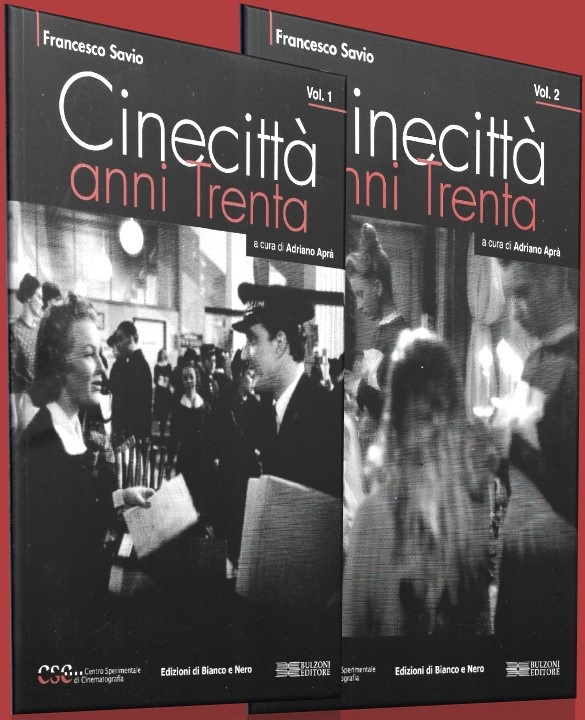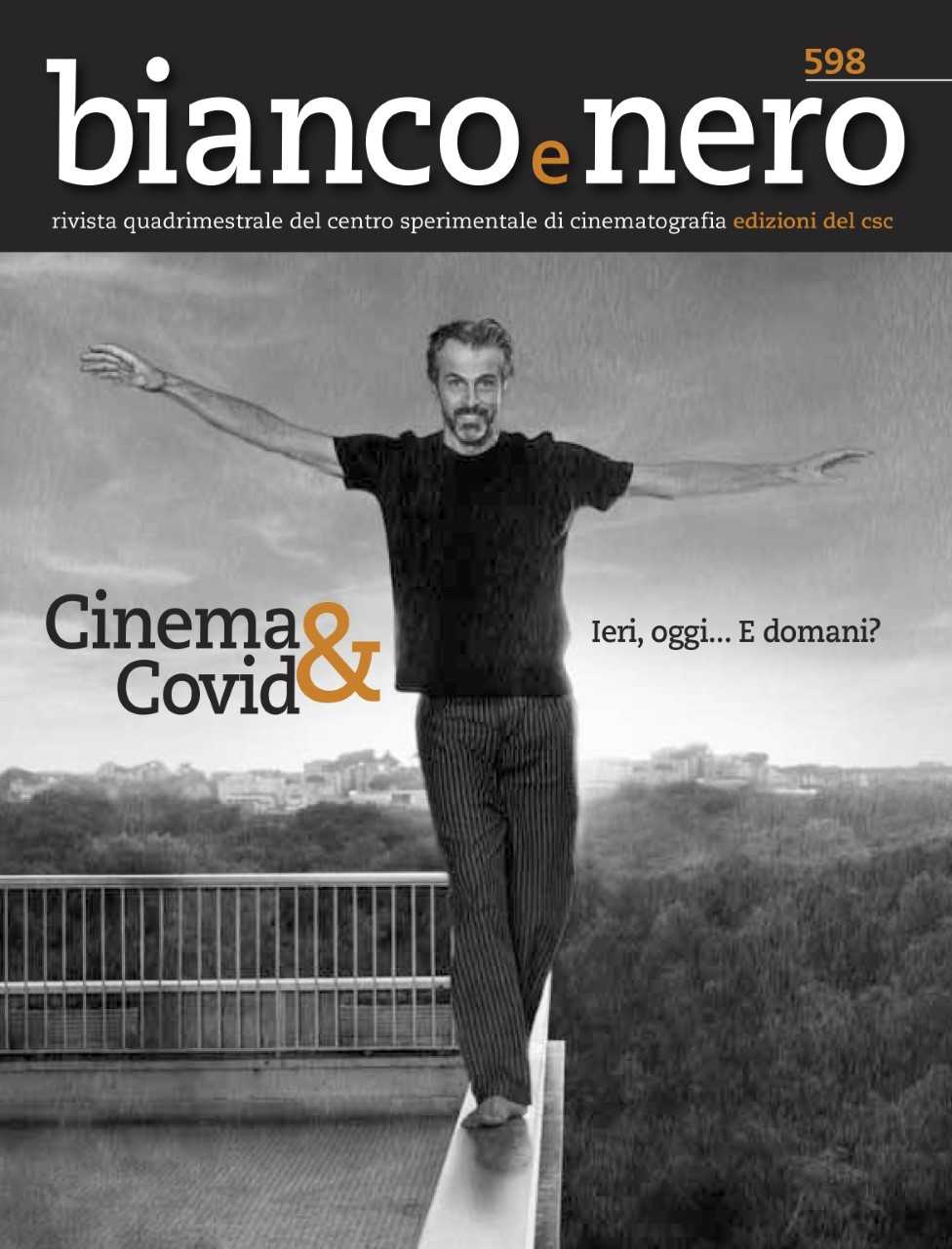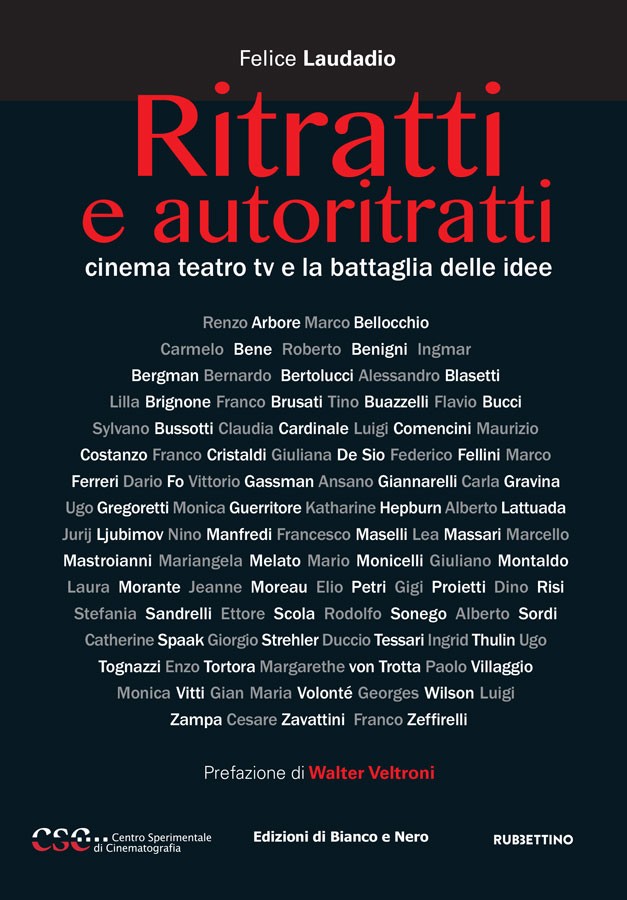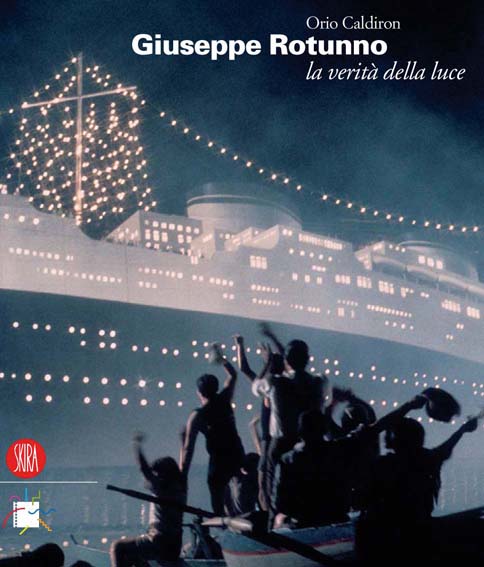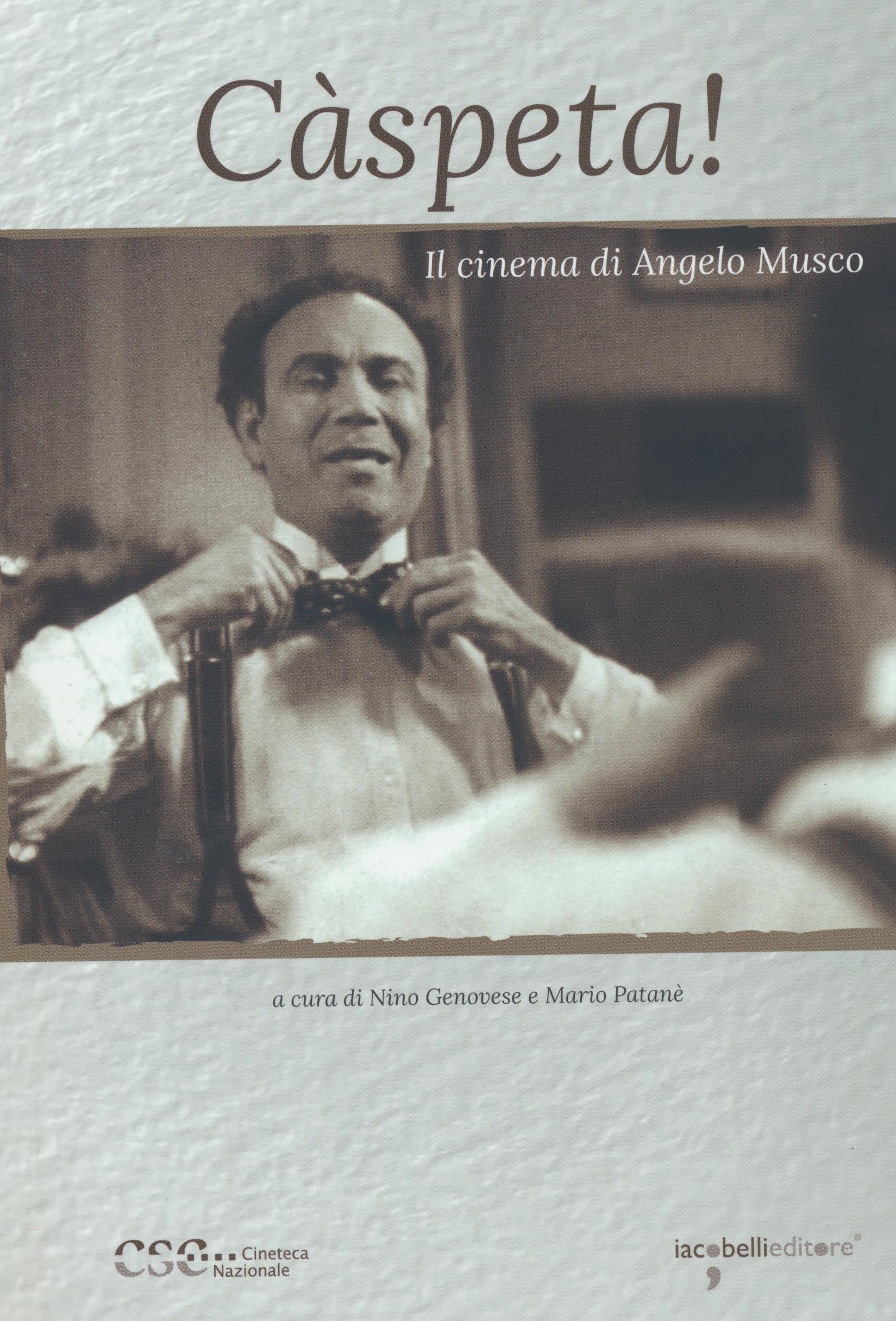Bookshop
Online store of books and DVDs published by the Centro Sperimentale di Cinematografia
Contacts: bookshop@fondazionecsc.it
Anile, Alberto (edited by)
L’ultimo Don Camillo thus brings back to life the long-lost and deeply missed final chapter of the beloved series, reviving the magic of a film that was meant to be yet never was.
€ 30,00
Gian Maria Volonté, through his artistic and political choices, molded himself into an author, while guiding the choices for his own filmography: his films tell the story of Italy.
€ 22,00
Giancarlo Mancini (edited by)
This issue of «Bianco e Nero» traces Carmelo Bene’s career, providing an overview that extends beyond cinema, theatre and any other field of his interests, while focusing on the TV author and his public persona instead.
€ 17,60
€ 22,00
Piera Detassis (edited by)
In this year 2024, Sophia Loren is celebrating an important birthday. The Centro Sperimentale di Cinematografia and Edizioni Sabinae are marking it with an entirely dedicated issue of “Bianco e nero,” the CSC’s long-running film magazine.
€ 22,00
Domenico Monetti, Luca Pallanch
Following Per i soldi e per la gloria, the chronicle of Italian cinema through the voices of the most important producers continues with this work. In Champagne e cambiali Monetti and Pallanch turn their research to the people who experienced firsthand the transition from theatrical cinema to home video and television distribution,
€ 23,00
Chiara Ricci (edited by)
Anna Magnani. Fifty years after her passing, “Bianco e Nero” takes a journey through time and throws us back to the years that saw the rise to success of the greatest actress of Italian cinema and theater.
€ 22,00
Matteo Pollone e Caterina Taricano (edited by)
A self-taught poet of cinema, a fierce filmmaker and story-teller, Pasolini’s guide to the anthropological character of the suburbs of Rome, Sergio Citti is an artist of unparalleled calibre, even beyond the Italian film scene. This book features a complete filmography (annotated by Citti’s most renowned scholars), a detailed biography, an updated bibliography and a compilation of interviews.
€ 28,00
Paolo Di Paolo (edited by)
The issue covers Moretti’s career: all his films are reviewed ex novo, by critics of very different ages. The reviews are complemented by essays by great writers, both Italian and international.
€ 22,00
Gérald Duchaussoy e Romain Vandestichele; Steve Della Casa (Italian edition)
Mario Bava is one of the most widely studied Italian directors by experts in popular cinema, who acknowledge his remarkable visual talent; moreover, his legendary ability to solve even the most complicated and seemingly overwhelming challenges that could arise during production through low-budget tricks prompted a series of critical analyses that have shed new light on Italian cinema.
€ 28,00
Emanuela Martini (edited by)
This issue of Bianco e Nero is yet another chapter in the magazine’s exploration of contemporary cinema and tribute to the excellence of the Centro Sperimentale di Cinematografia. As a matter of fact, Gianni Amelio has been a teacher of the Directing course at the prestigious school on several occasions. But, first and foremost, he is a major director, one of the greatest among those currently working in Italian cinema.
€ 22,00
Alberto Anile, Giorgio Gosetti, Giovanni Spagnoletti (edited by)
This book is the final outcome and concludes the Lizzani Project that was carried out throughout the year that marked his first centenary.
€ 22,00
Domenico Monetti, Luca Pallanch
Per i soldi o per la gloria paints a fascinating portrait of all those individuals who started their business around the 1960s and 1970s, from Vittorio Cecchi Gori to Fulvio Lucisano, from Nicola Carraro to Gianfranco Piccioli, from Adriano De Micheli to Claudio Bonivento, from Marina Piperno to Elda Ferri.
€ 23,00
Andrea Pergolari
This book analyzes Mauro Bolognini the artist’s extreme professional vitality by following the red thread of his relationship with the intellectuals of the time, an inexhaustible source of inspiration and debate, making it one of the most original and nonconformist careers within the Italian film-industry.
€ 17,60
€ 22,00
Roberto Calabretto, Federico Savina
This book chronicles the great adventure of Federico Savina, an artisan of the recording room and the moviola, a life filled with traveling and memorable encounters: from Philippe Sarde’s fussiness while working on Polanski’s films to the recording of the well-known “Sean sean” of Giù la testa, from Dario Argento’s looks to the disagreements with Zeffirelli and the problems with the Italian audio mixing of Star Wars.
€ 16,00
Enrico Magrelli (edited by)
Issue no. 604 of “Bianco e Nero” magazine largely features Liliana Cavani, who reveals herself – as artist, intellectual and woman – in a detailed interview with Enrico Magrelli, the issue’s curator. Words are, on occasions, quite meaningful. And those of filmmakers can be valuable or illuminating. Especially when, in retrospect, they vivify past journeys, creative trajectories, unexpected opportunities, planned or impromptu choices, suggestions and narrative needs.
€ 22,00
Enrico Magrelli (edited by)
This issue of «Bianco e Nero» is devoted to a couple, with the intention of honouring two outstanding talents of the Centro Sperimentale di Cinematografia: Francesca Calvelli and Marco Bellocchio have been both work partners (together they have produced fifteen films, spanning from Il sogno di una farfalla in 1994 to the acclaimed TV series Esterno notte in 2022) and life partners for almost thirty years.
€ 22,00
Paolo Cherchi Usai
Over thirty years have passed since its first Italian-language publication, and Paolo Cherchi Usai’s Study Guide for Silent Film has long become an international classic in film studies, an invaluable introductory overview of the early days of film heritage preservation and restoration.
€ 47,00
Orio Caldiron e Matilde Hochkofler
In this first comprehensive monograph, the life and works of “Carletto” Bragaglia are brought to life through the analysis of each film and a priceless collection of his comments and the fond memories of the many people who worked with him. The book ends with a reconstruction of La fossa degli angeli, his great lost film set in the Apuan quarries, starring Amedeo Nazzari and Luisa Ferida, in the form of an exquisite photo-novel featuring sixty extremely rare photographs.
€ 28,00
Goffredo Fofi
This book presents Fofi’s recap of his relationship with Pier Paolo Pasolini through a long autobiographical essay and the re-publication of all written contributions on the subject from 1964 to 2022 – texts which are often quite difficult to obtain but still relevant for a better understanding of the figure of Pasolini and his time.
€ 16,00
The film industry and its relationship with the environment. The film industry has a duty of care and must address the environmental issue: this entails turning the spotlight on the many films, both old and recent (from the Lumière brothers to Don’t Look Up), that have dealt with the subject; but it also means discussing how the film industry affects the environment. This is because film sets also contribute to pollution, but thankfully there is a growing awareness and many production companies are implementing increasingly virtuous plastic-free protocols.
€ 22,00
Jean A. Gili (edited by)
The book focuses entirely on a great master of Italian cinema, Ettore Scola. This monograph features several illustrations by the director as well as contributions by Felice Laudadio, Walter Veltroni, Jean A. Gili, Paola and Silvia Scola, Steve Della Casa, Francesco Bruni, Roberto Cicutto and Milena Vukotic, among others.
€ 22,00
Franco Cardini, Riccardo Facchini, Davide Iacono (edited by)
Although medieval settings and themes are often confined to a political perspective – sometimes turning the Middle Ages into a political metaphor – this simply cannot constitute the only interpretation of the “medievalist” film genre. This issue of “Bianco e Nero” attempts to provide the broadest and most diverse overview on this topic.
€ 18,00
Maurizio Porro (edited by)
This issue of “Bianco e nero”, directed by Felice Laudadio and edited by Maurizio Porro, traces Mariangela Melato’s entire career and her contribution to the cinema, theatre and television industry.
€ 18,00
Luca Martera
This well-documented and extensively illustrated book reveals for the first time the fascinating, dramatic and unexpected story of the most censored film in the history of Italian cinema.
€ 22,00
Fabrizio Catalano e Vincenzo Aronica (edited by)
This book attempts to analyze the relationship between that brave intellectual from Racalmuto, whom our society so greatly misses, and the seventh art, through the memories and observations of his nephew, director Fabrizio Catalano, a former student of the Centro Sperimentale di Cinematografia.
€ 18,00
Francesco Savio ; Adriano Aprà (edited by)
Interviews with 116 actors, directors, screenwriters, film-makers, producers protagonists of the second Italian cinema (1930-1943).
€ 70,00
It portrays how the film industry was affected by the pandemic from various perspectives: production, business management, distribution and the creative process.
€ 18,00
Felice Laudadio
A gallery of stars of the entertainment industry, including but not limited to Italians, set against the backdrop of this country’s cultural history, whose legacy should not be lost.
€ 18,00
Orio Caldiron
The CSC pays tribute to one of its most eminent teachers, Giuseppe Rotunno, great director of photography and the master of light of some of the showpieces that left a mark on film history. His contribution spans half a century of the history of cinema, with collaborations with Visconti, Fellini, De Sica, Rossellini, Wertmüller, Monicelli, Pietrangeli, Risi, Zurlini, Freda, Stanley Kramer, Bob Fosse, Mike Nichols, Robert Altman, Terry Gilliam.
€ 40,00
Nino Genovese and Mario Patanè (edited by)
This Quaderno, the brainchild of Mario Patané and Nino Genovese, created to celebrate the 150th anniversary of Musco’s birth (18th December 1871), represents one of the fruits of a complex effort by the Cineteca Nazionale, whose expertise ensured the restoration of delicate and rare film footage.
€ 9,90
Search
Advanced search

 Login
Login Chart
Chart








